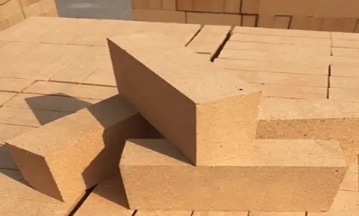- 14
- Oct
Analysis of Factors Affecting the Life of Converter
Analysis of Factors Affecting the Life of Converter
There are many reasons for the damage of the converter lining, mainly mechanical force, thermal stress and chemical corrosion.
1 The influence of mechanical force
1.1 Stirring and melting can damage the brick lining
Due to the impact force of the blowing air and the rise and expansion of the air flow, the melt will bring a large amount of stirring energy to the melt. When the gas-liquid two-phase mixed fluid hits the surface of the melt, the melt is sprayed onto the furnace lining by the gas-liquid two-phase fluid, causing a strong mechanical impact on the furnace lining, creating conditions for chemical corrosion. Therefore, choosing a reasonable blowing intensity is an important part of improving the life of the converter. A relatively suitable air supply intensity and air supply system can reduce the impact of the melt on the furnace lining and prolong the life of the converter.
1.2 The damage of the stomata to the stomata brick
In the blowing process, magnetic iron will inevitably be produced. During the hole blowing operation, the melt in the tuyere area is reinjected, and the tuyere is easy to form nodules, which requires continuous cleaning. However, the mechanical vibration force has a great influence on the damage of the brick masonry in the tuyere area, causing the surface of the brick masonry in the tuyere area to deteriorate under the action of melting and erosion. When the metamorphic layer expands to a certain extent, the brick body will peel off, which seriously affects the furnace age.
2The influence of thermal stress
The resistance of refractory materials to damage caused by temperature changes during heating and cooling is called thermal shock resistance, which is an important index to measure the quality of refractory materials. Most refractory materials are damaged due to poor thermal shock resistance at temperatures much lower than refractory materials. The thermal damage of refractory materials in the production process is mainly related to thermal stress. The converter is a periodic operation process. Due to the waiting materials, furnace mouth repair, equipment failure and other reasons, it will inevitably lead to the shutdown of the furnace and cause the temperature fluctuation of the converter.
3 The influence of chemical attack
Chemical corrosion mainly includes melting corrosion (slag, metal solution) and gas corrosion, which is manifested as the dissolution, bonding and penetration of magnesia refractory materials, which changes the structure of refractory materials, weakens their performance and damages them.
3.1 Melt
The melt contacts and penetrates through the interface between pores, cracks and crystals. During the contact process, the refractory material is dissolved in the melt, and a soluble compound is formed on the surface of the refractory material, and its bulk density and raw materials vary greatly. When the melt penetrates the refractory material to a certain depth, a modified layer completely different from the raw material will be produced. Because the structure of the modified layer is different from that of the raw material, the volume change of the modified layer causes cracks in the raw material to be caused by structural stress. Severe cracks cause the modified layer to peel off or crack, and a new modified layer is formed under the erosion of the melt. . This circulation can severely damage the refractory.
3.2 Gas erosion
Cavitation generally refers to the reaction of SO2 and O2 in the copper matte with the alkali oxides in the refractory material to form metal sulfates, the density of which is less than that of the alkali oxides. Due to the difference in the volume density of the two phases, stress is generated, which loosens the refractory material and exfoliates, and aggravates the damage of the refractory material.

